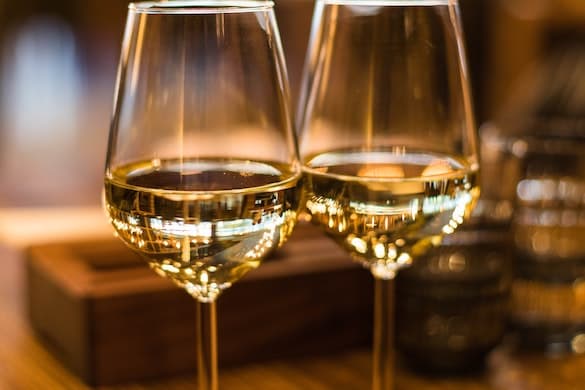Welcome to Savoie, One of French Wine’s Last Frontiers
From simple to profound, the wines clearly express the unique terroir of this hidden gem.

Cold mountain air slips over glaciers and down alpine slopes to the rolling foothills of France’s tiniest AOC, Savoie. This is one of the last frontiers for French wine, a place where vignerons are the norm and young winemakers can still (usually) afford to buy land. From simple to profound, the wines clearly express the unique terroir of this hidden gem.
The immediate beauty of the wines of Savoie is both in their diversity and their shared characteristics. Geology, elevation, aspect, soil types, grape varieties, and the social nuances of individual villages’ tastes and traditions give us a whole lot to explore. But it’s the climate at 800- to 1,800-foot elevation that binds them all together; cool, continuously moving air juxtaposed against sunny warm days.
Although wine has been made here since Roman times with the triple blows of powdery mildew, downy mildew, and phylloxera (all imported from the U.S.), very few vineyards were left as of the 1970s. Savoie was saved by skiers, who, like their Provencal vacationers to the south, would sate themselves with the nearest thirst-quencher to be found. It was low-alcohol, high-acid wines for the former, and pale pink rosé in the case of the latter.
Still, the wines didn’t gain a following outside of their provincial use. This was mostly due to scale. Like most European wine growers before World War II, farms here were poly-cultural. Grapes were just one crop of many, relegated to the sites that animals and other food crops wouldn’t make it.
Steep slopes have kept estates small, as mechanization is difficult and expensive to implement. It means work is done by hand, slowing it down, keeping more attention on each plant and avoiding the mass production of some easier-to-work regions, like Beaujolais to the west. It also means no one is getting rich, and investment in new technologies, education, or to expand holdings are slow coming.
Now, we are lucky enough to be enjoying the Savoie wines in their prime. Thanks to the popularity and extreme price increases of other French wines, intrepid wine lovers have turned their attention to the lesser-known corners of the wine world. With the attention, bottles are getting more expensive, but quality is also rising, as are the shining stars, now focused entirely on fine wine production.
Climate change has also made once consistently cool places, like Alsace, way to the north, and even Burgundy and Loire Valley, much warmer. Where fresh wines were once the norm, light-bodied, classic wines are now harder and harder to come by. Savoie continues to excel in this disappearing style.
With 23 different grape varieties allowed, many only found here, and second only to the Rhone Valley, there is a lot to taste through. Whites Jacquère, Chasselas, Gringet, and Aligote all make extremely quaffable, early drinking wines. Altesse, Roussanne, Chardonnay, and Marsanne are capable of long-lived, concentrated wines, with plenty of complexity — nuts, toast, butter, beeswax — depending on the exact varietal and age, and they are mineral to the core.
Reds are often overlooked, as they only make up 30 percent of production, but are very much worth seeking out. Persan, Gamay, Poulsard are youthful and vibrant, juicy and mineral with low tannins. Mondeuse is the real winner, though: Deep purple in color, you expect the wine to be rich, full bodied, and black-fruited. Instead, you are treated to expressive violet, sour cherry, raspberry, and currants, often with a gamey, sanguine layer and a long spicy finish. The tannins are sleek but present, the acidity high but in check, and alcohol rarely exceeds 13 percent, for plenty of aging potential but delicious both in their youth or after 10-plus years.
Savoie is gaining in popularity here in the U.S., but the wines are still relatively hard to find outside of major markets. Even then, because of the tiny production capacities of each estate, most are only available on release and not year round. But, if you are interested in exploring new-to-you regions and grapes in refreshingly fun styles, this one is worth inquiring about at your favorite shop or restaurant.

